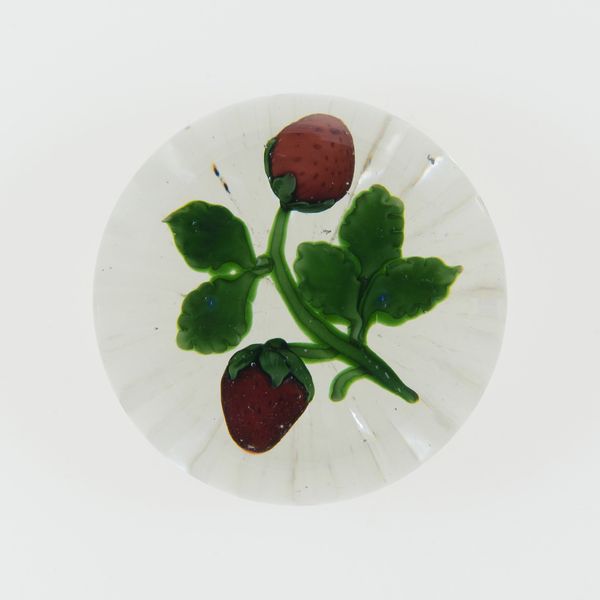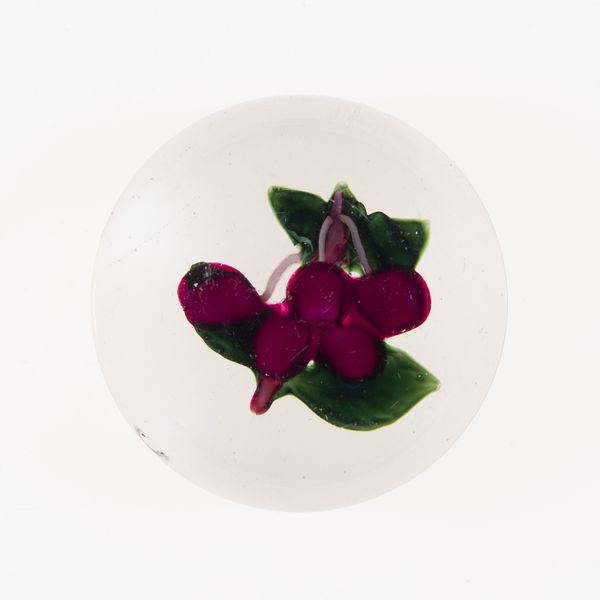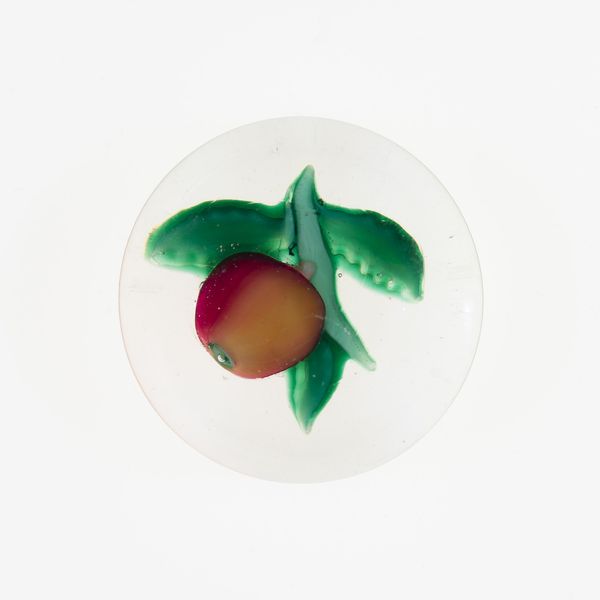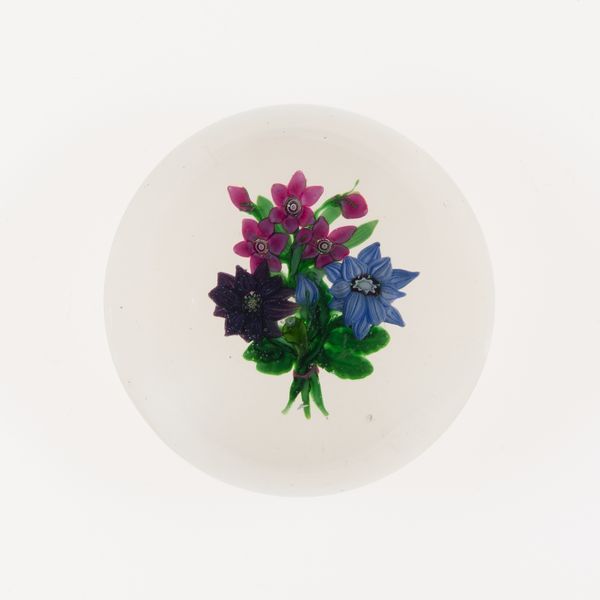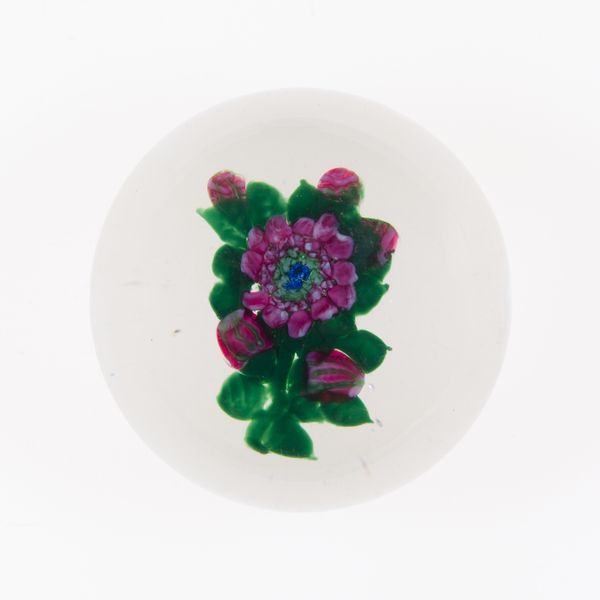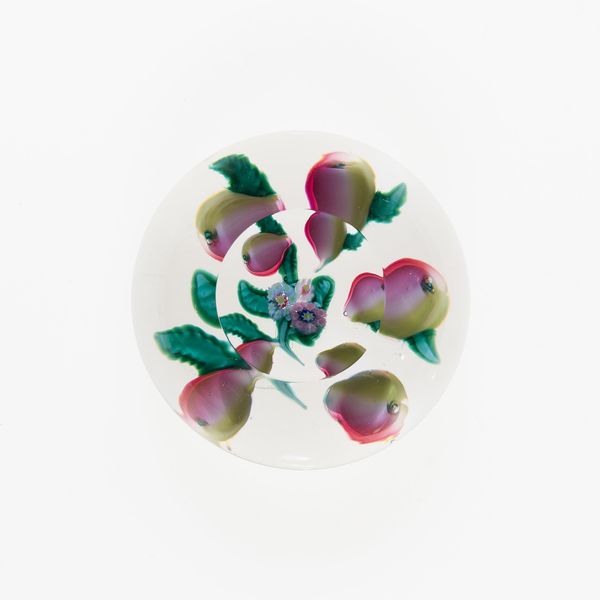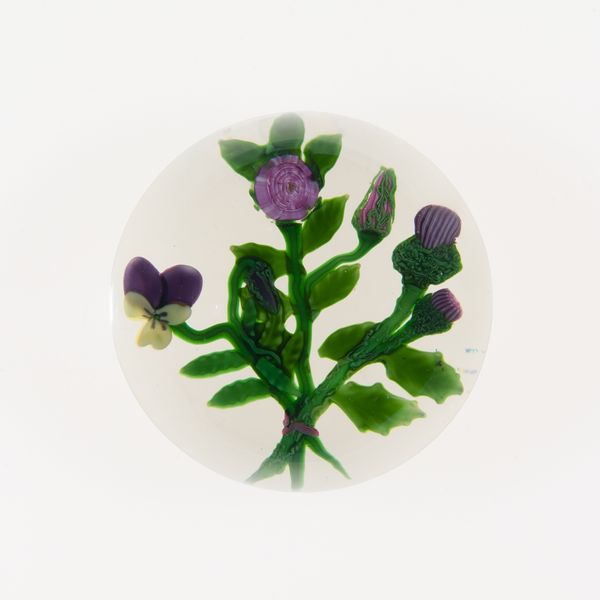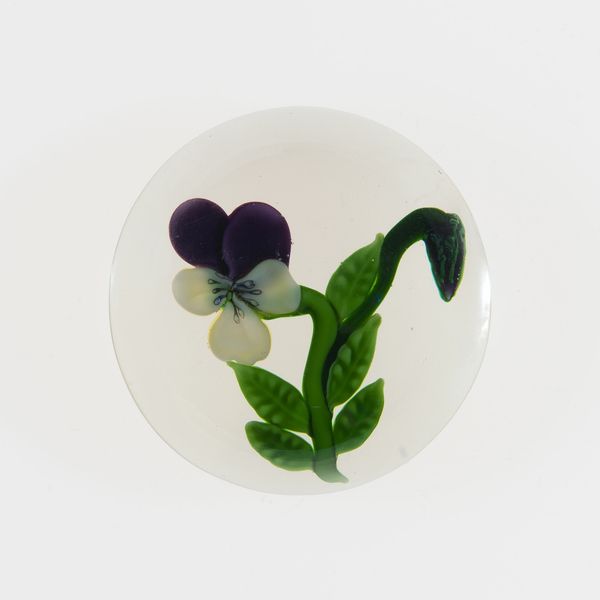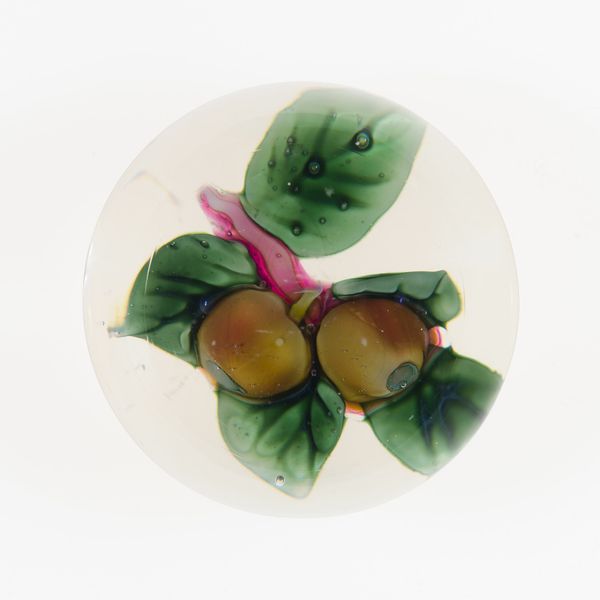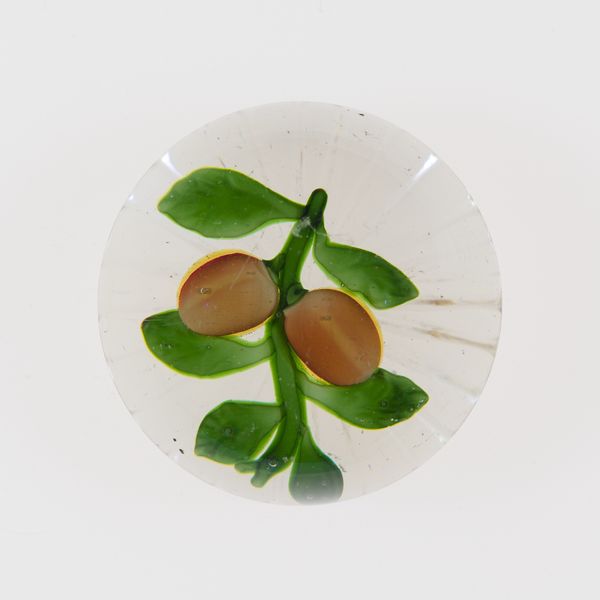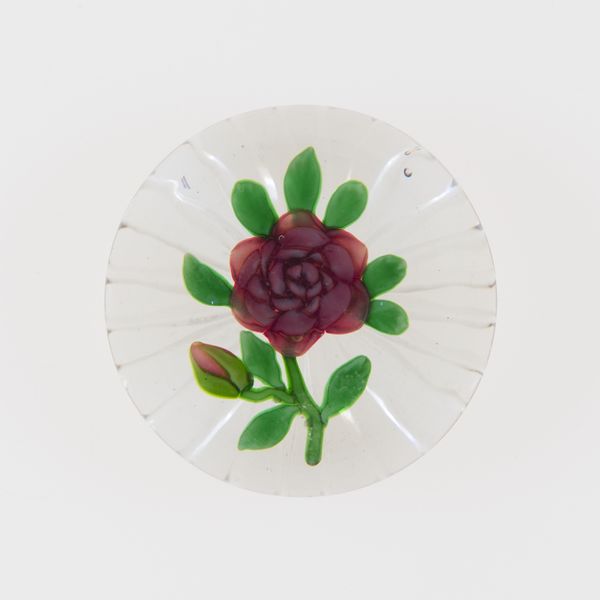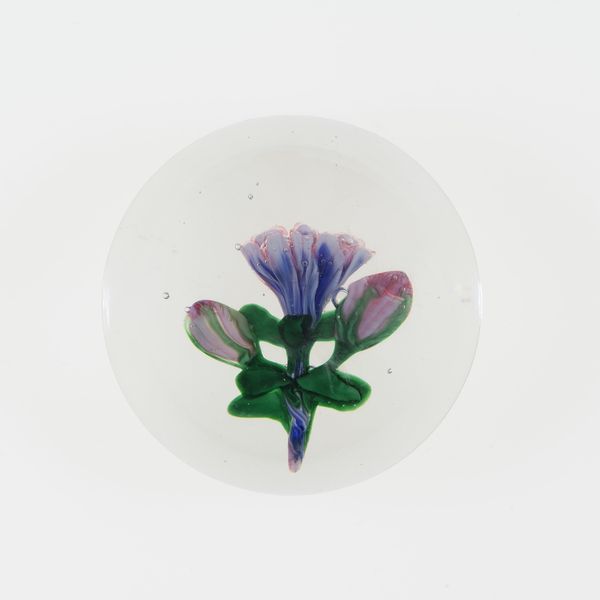
paper, glass
#
paper
#
glass
#
geometric
#
france
Dimensions: Diam. 6.8 cm (2 3/4 in.)
Copyright: Public Domain
Curator: Welcome. Today, we’re looking at a paperweight crafted by Baccarat Glassworks, dating back to the 19th century, held in the collection of The Art Institute of Chicago. Editor: Immediately, I'm struck by the playful, almost childlike innocence of this object. The colors are soft, the form is simple; it's like a miniature world captured in glass. Curator: Exactly! The French origin of the work and the time of production give context for the strawberry motif, often found in symbolic objects. What does this domestic detail evoke for you in a grander scale? Editor: In terms of materials, I see the intersection of industrial production and handmade artistry so indicative of the era. This paperweight, in essence, elevates everyday glassmaking into something precious, blurring those craft boundaries. Curator: I see that connection too, considering that at that period in time, class dictated a certain appreciation of glass-making artistry like this. But let's turn our gaze to what kind of messages the strawberries themselves tell, or don’t tell, about its first user: female, maybe from a middle-upper class, interested in details and keeping things neat? Editor: Precisely, glass itself requires intense labor and expertise, and the resulting piece serves primarily as an ornamental, functional item. Were they luxury goods in France? Curator: Definitely. The paperweight became a symbol of status, a small treasure to be displayed, which now we can consider from feminist perspective by examining gendered association of this decorative work as belonging in the domestic space, like a woman properly adorns. Editor: Looking again at the piece, I consider its size, convenient and neat: these were mass-produced, enabling wider accessibility, but then what would become of those women laborers responsible for these intricate details, to begin with? The context would also have the reverse reading. Curator: Those are complex questions! By understanding what glass making meant at the time, it opens pathways to examine our social fabrics through simple, small objects. Editor: Agreed! Analyzing process alongside the cultural connotations helps appreciate its deeper societal value, too often overlooked.
Comments
No comments
Be the first to comment and join the conversation on the ultimate creative platform.

